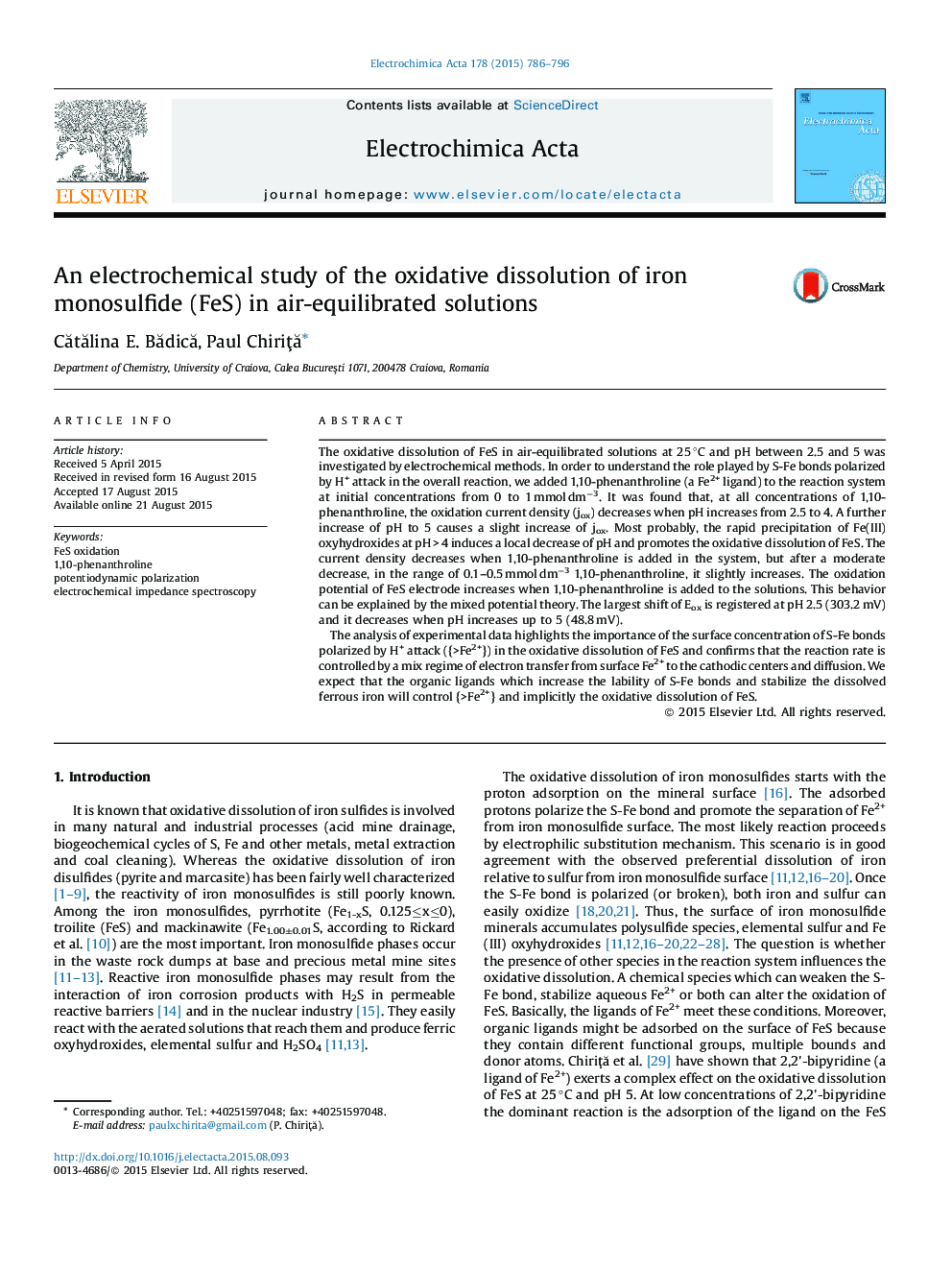| کد مقاله | کد نشریه | سال انتشار | مقاله انگلیسی | نسخه تمام متن |
|---|---|---|---|---|
| 183744 | 459556 | 2015 | 11 صفحه PDF | دانلود رایگان |

• The oxidation of FeS was studied using electrochemical techniques.
• 1,10-phenanthroline reacts with FeS surface.
• 1,10-phenanthroline controls the concentration of surface Fe2+.
• The rate is controlled by a mix regime (electron transfer and diffusion).
The oxidative dissolution of FeS in air-equilibrated solutions at 25 °C and pH between 2.5 and 5 was investigated by electrochemical methods. In order to understand the role played by S-Fe bonds polarized by H+ attack in the overall reaction, we added 1,10-phenanthroline (a Fe2+ ligand) to the reaction system at initial concentrations from 0 to 1 mmol dm−3. It was found that, at all concentrations of 1,10-phenanthroline, the oxidation current density (jox) decreases when pH increases from 2.5 to 4. A further increase of pH to 5 causes a slight increase of jox. Most probably, the rapid precipitation of Fe(III) oxyhydroxides at pH > 4 induces a local decrease of pH and promotes the oxidative dissolution of FeS. The current density decreases when 1,10-phenanthroline is added in the system, but after a moderate decrease, in the range of 0.1–0.5 mmol dm−3 1,10-phenanthroline, it slightly increases. The oxidation potential of FeS electrode increases when 1,10-phenanthroline is added to the solutions. This behavior can be explained by the mixed potential theory. The largest shift of Eox is registered at pH 2.5 (303.2 mV) and it decreases when pH increases up to 5 (48.8 mV).The analysis of experimental data highlights the importance of the surface concentration of S-Fe bonds polarized by H+ attack ({>Fe2+}) in the oxidative dissolution of FeS and confirms that the reaction rate is controlled by a mix regime of electron transfer from surface Fe2+ to the cathodic centers and diffusion. We expect that the organic ligands which increase the lability of S-Fe bonds and stabilize the dissolved ferrous iron will control {>Fe2+} and implicitly the oxidative dissolution of FeS.
Figure optionsDownload as PowerPoint slide
Journal: Electrochimica Acta - Volume 178, 1 October 2015, Pages 786–796